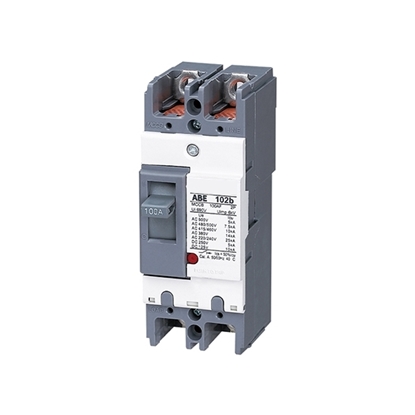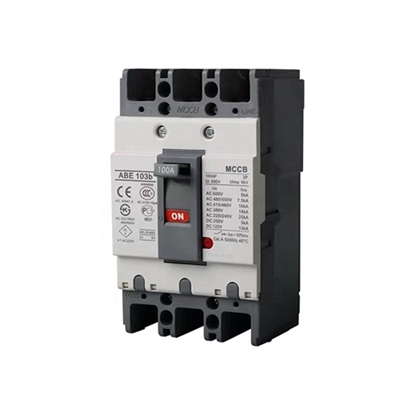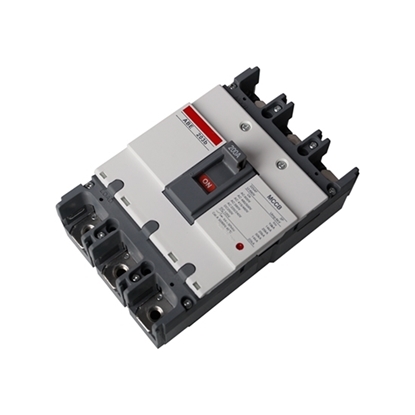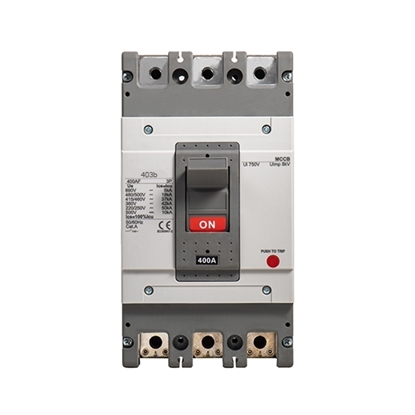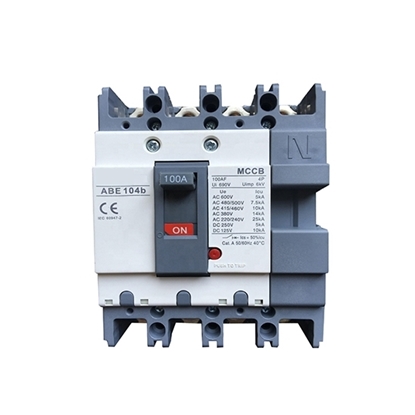Molded Case Circuit Breaker
2 Pole Molded Case Circuit Breaker, 20A/ 30A/ 40A/ 50A to 100A
3 Pole Molded Case Circuit Breaker, 50A/ 60A/ 75A/ 100A
3 Pole Molded Case Circuit Breaker, 100A/ 150A/ 200A/ 250A
3 Pole Molded Case Circuit Breaker, 250A/ 300A/ 350A/ 400A
4 Pole Molded Case Circuit Breaker, 50A/ 60A/ 75A/ 100A
Molded case circuit breakers, or MCCBs, are electrical protection devices used to protect the electrical circuit from excessive current, which can cause overloads or short circuits. Molded case circuit breakers can be used for a wide range of voltages and frequencies with adjustable trip settings.
ATO.com online store provides 2 pole, 3 pole, 4 pole mccb breaker for selection, wide range rated current from 20A to 400A are available. The moulded case circuit breaker has advantages of high reliability, low failure rate, long overhaul period and low maintenance workload.
Molded circuit breaker is used to distribute electric energy and protect circuits and electrical equipment from overload or short circuit.
What is a Molded Case Circuit Breaker?
The power system requires a high degree of reliability. During operation, the system may have some abnormal conditions or may cause troublesome problems. Some of these situations are beyond control and cannot be avoided. Therefore, there is a need for an efficient device to detect such failure conditions and react immediately to minimize damage to the device. Molded case circuit breaker (MCCB) can help protect equipment. A molded case circuit breaker (MCCB) is a device that protects low-voltage power distribution systems from overloads and short circuits. Molded case circuit breaker allows quick reactivation of a circuit after clearing a short circuit or overload. MCCBs (molded case circuit breakers) can easily identify the difference between an overcurrent and a short circuit. It allows a slight overcurrent for a while, but turns on faster as the current level increases. MCCB can be used to complete protection and disconnection functions.
Molded Case Circuit Breaker Working Principle
The main contacts of the molded case circuit breaker are manually operated or electrically closed. After the main contact is closed, the free trip mechanism locks the main contact in the closed position. The coil of the overcurrent release and the thermal element of the thermal release are connected in series with the main circuit, and the coil of the undervoltage release is connected in parallel with the power supply.
When the circuit is short-circuited or severely overloaded, the armature of the overcurrent release is pulled in to make the free trip mechanism act, and the main contact disconnects the main circuit.
When the circuit is overloaded, the heating element of the thermal release will bend the bimetal, push the free release mechanism to act, and the main contact will disconnect the main circuit.
When the circuit is under-voltage, the armature of the under-voltage release is released, which also makes the free trip mechanism act, and the main contact disconnects the main circuit.
When the shunt tripping button is pressed, the armature of the shunt tripper pulls in, making the free trip mechanism act, and the main contact disconnects the main circuit.
MCCB vs. MCB
The main difference between MCB and MCCB is their capacity. On the one hand, MCBs are rated at less than 100 amps and interrupted at less than 18,000 amps. Also, their trip characteristics may not be adjustable since they cater primarily to low circuits. MCCBs, on the other hand, provide amperage as low as 10 and as high as 2,500 as needed. Their breaking rates range from 10,000 to 200,000 amps. In addition, the MCCB has adjustable trip elements for more advanced models.
- The trip circuit of the MCB is fixed and is movable in the MCCB.
- MCB draws less than 100 amps while MCCB draws up to 2,500 amps.
- In MCB remote on/off is not possible whereas in MCCB this can be achieved by using shunt lines
- MCB is mainly used for small current circuit, MCCB is used for high current circuit.
- MCBs are used for low energy demand (domestic), while MCCBs are used in high energy demand areas (large industry).
- Due to its application and larger resistance point, the cost of MCB is much lower than that of MCCB.
MCCB vs. ACB
A circuit breaker is essentially a safety device for any property that uses electricity. These fixtures act as third parties in complex and dangerous electrical wiring systems. MCB and MCCB are circuit breakers. They are used in homes to prevent personal injury and electrical damage. These devices are designed to perform specific functions. It is their special features that make them special. The differences between molded case circuit breaker and air circuit breaker are following:
- The difference between breaking current: the load and current of the circuit breaker are higher than that of the air switch;
- The difference between supporting equipment: the equipment supporting the mechanism of the circuit breaker is more complicated than the air switch;
- Difference in voltage level: When the current is short-circuited, the circuit breaker can cut off its current. In the case of high-voltage electrical appliances, the two are different from each other, and they can still operate normally, and can withstand a larger load, while the air switch will only exceed a certain current. will automatically disconnect.
- Differences in function: The circuit breaker will automatically trip when the circuit is short-circuited. It is often used in large-scale circuits such as high voltage, and is used for power failure and power transmission. The air switch is often used in households and is suitable for use in small circuits for isolation and protection.

- Different protection methods: the air switch can quickly disconnect the circuit and perform reliable protection in the event of overload, short circuit, and undervoltage of the line and load. Molded case circuit breakers can automatically cut off the current after the current exceeds the tripping setting, and use a plastic insulator as the outer casing of the device to isolate the conductors and the grounded metal parts.
- Different application scope: Air switch circuit breakers use a certain contact structure to limit the current limiting principle of the short-circuit current peak value during breaking, which has a significant effect on improving the breaking capacity of the circuit breaker, and is widely used. Molded case circuit breakers are relatively poor.
- Different in terms of safety: the air switch circuit breaker has high safety. Molded case circuit breakers are slightly worse.

